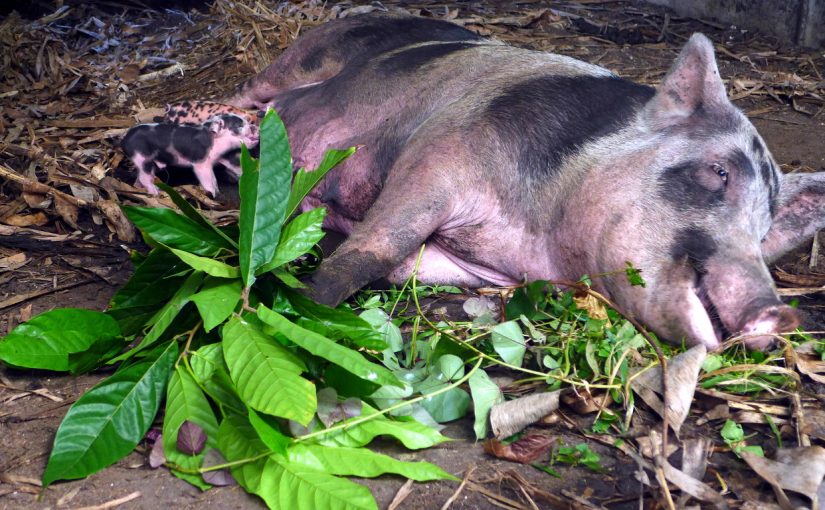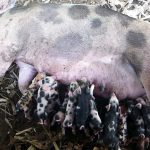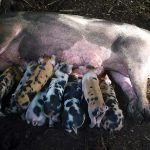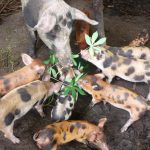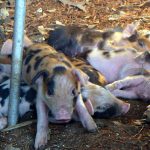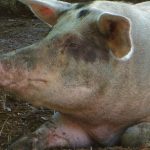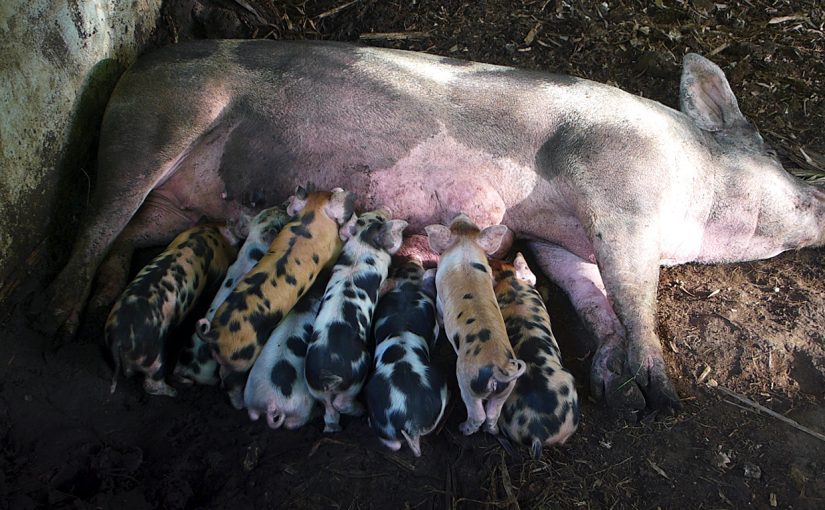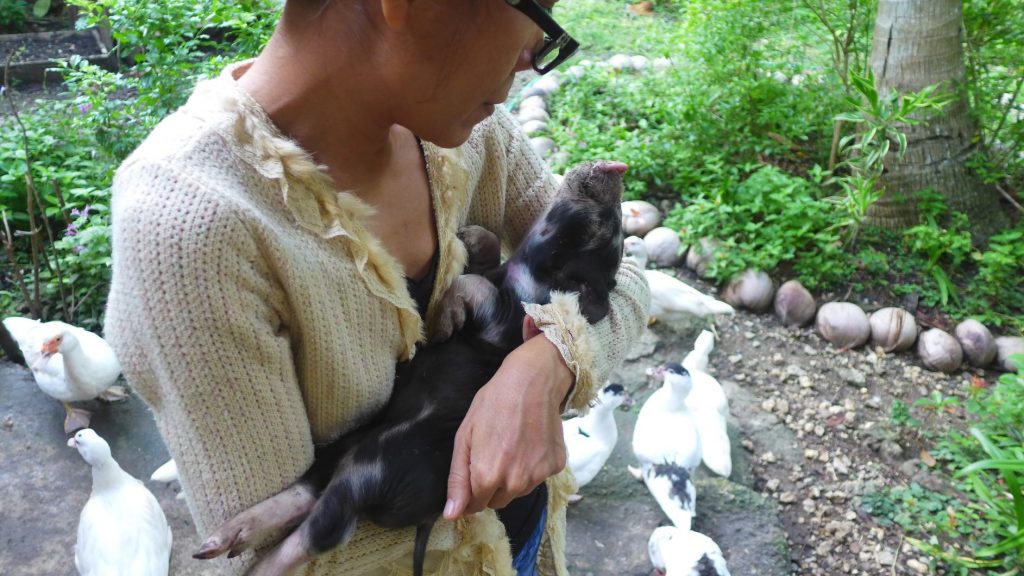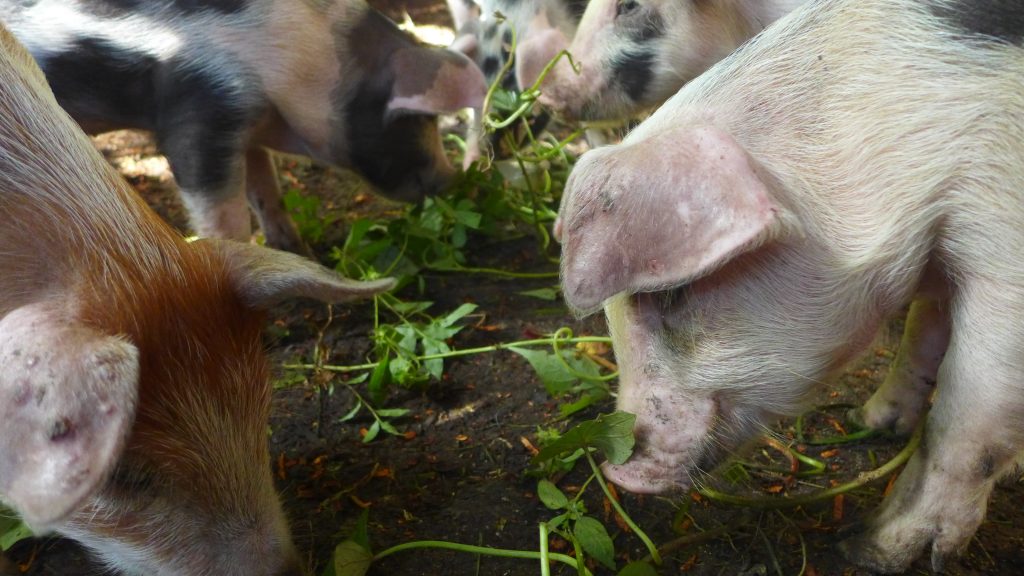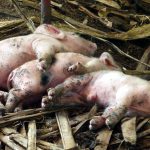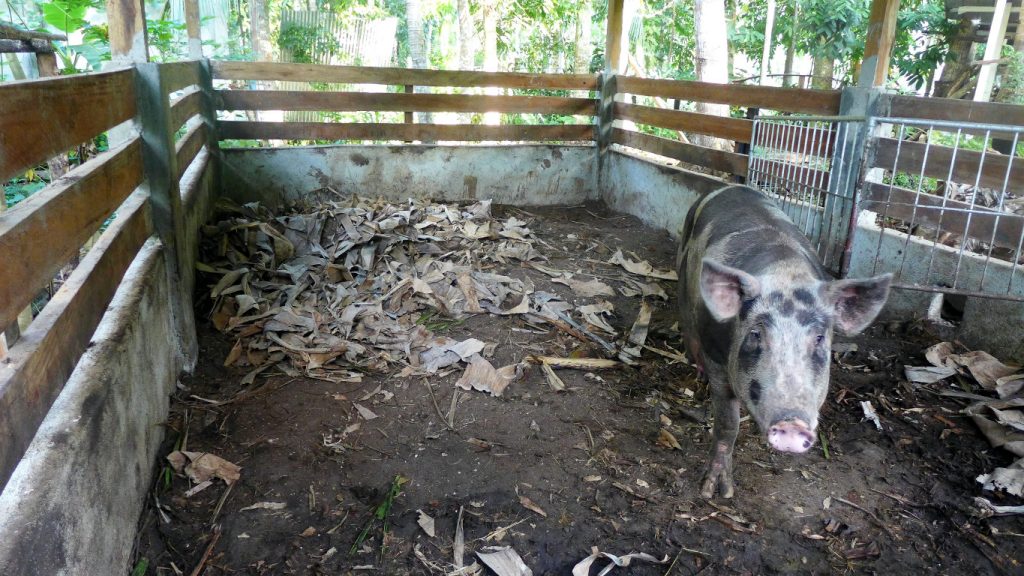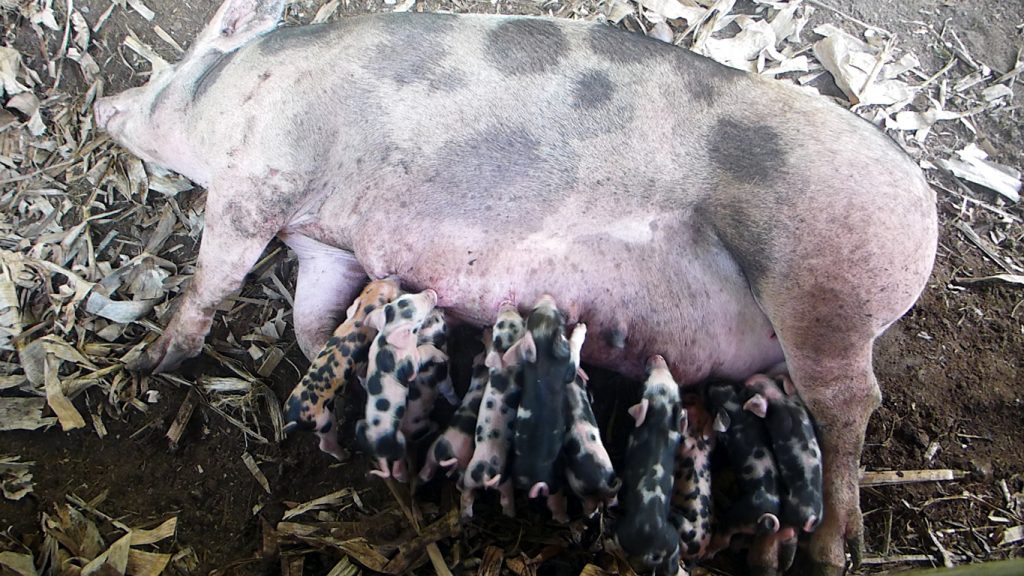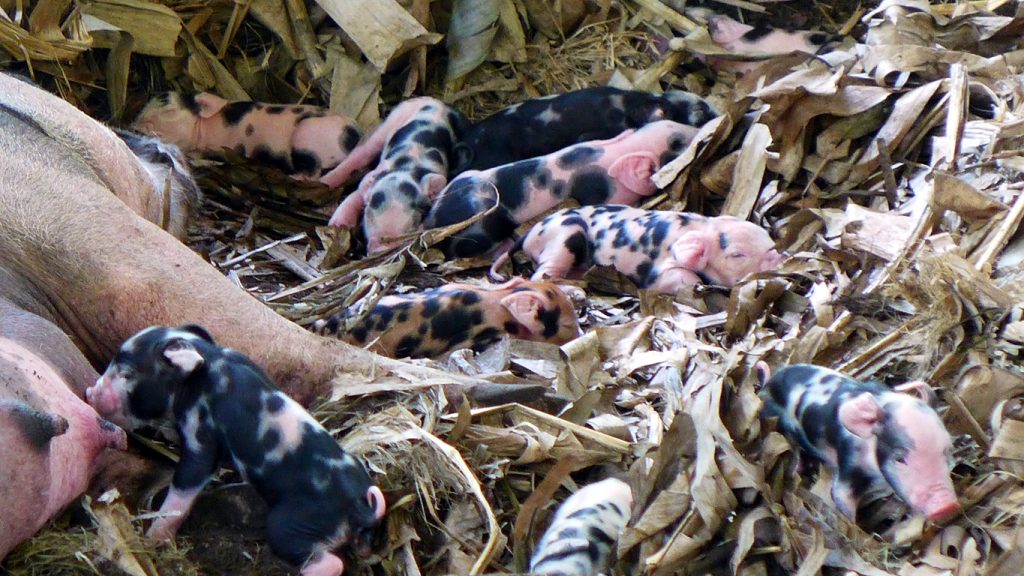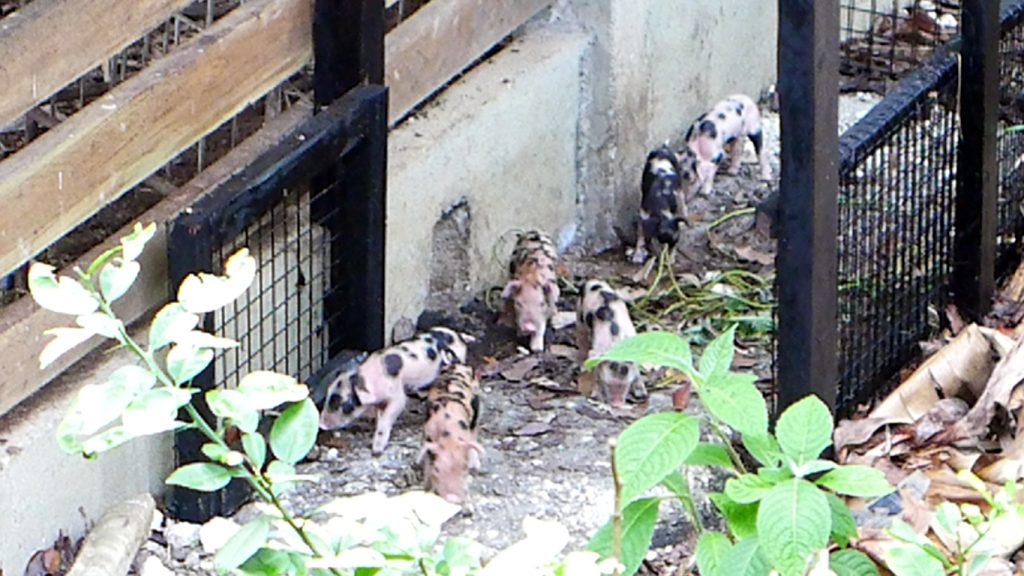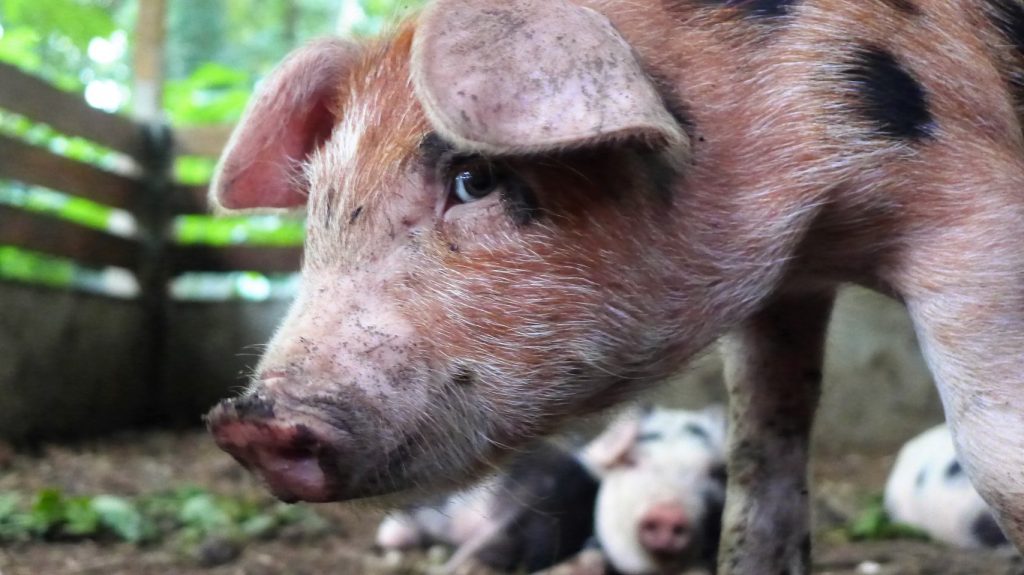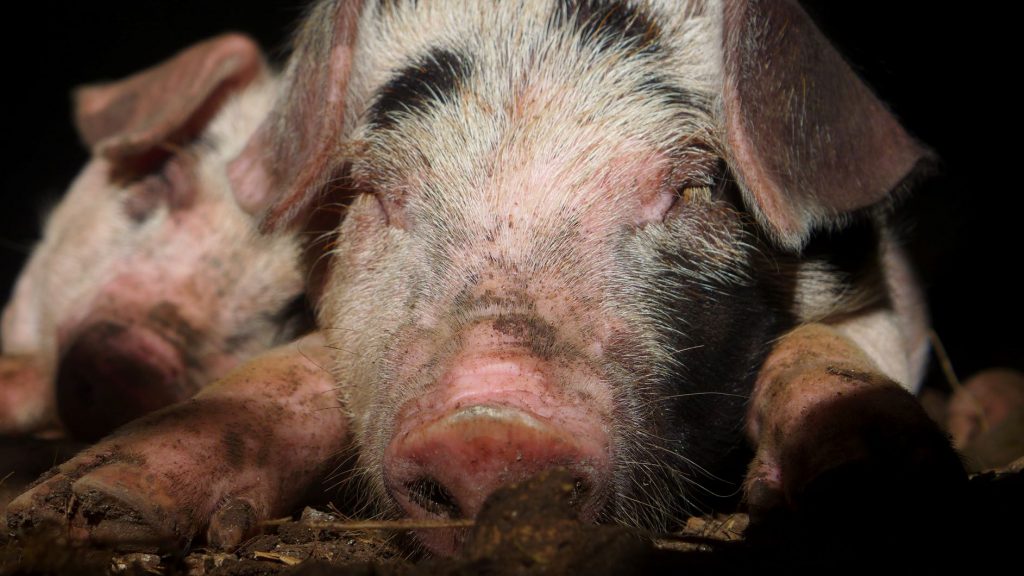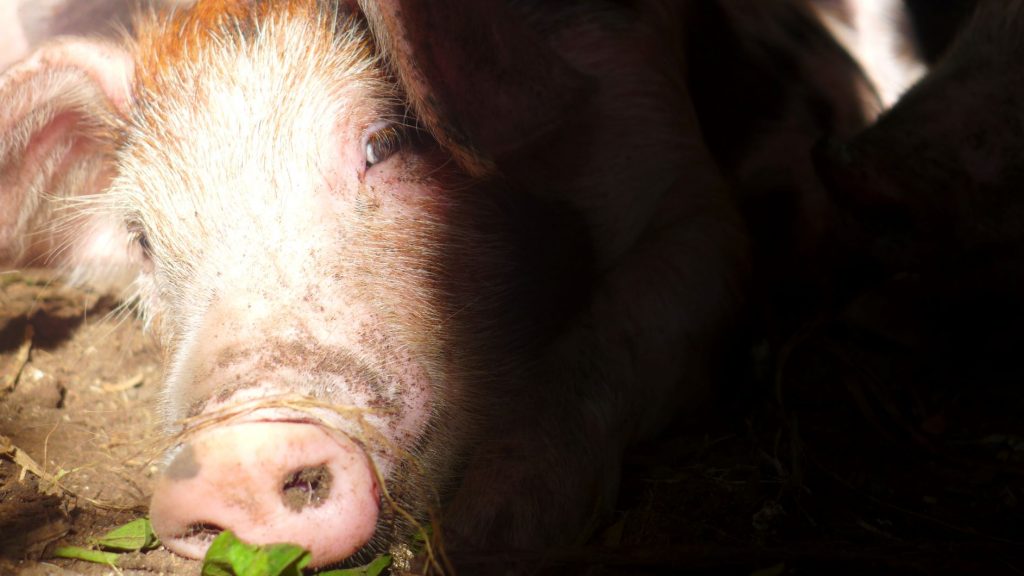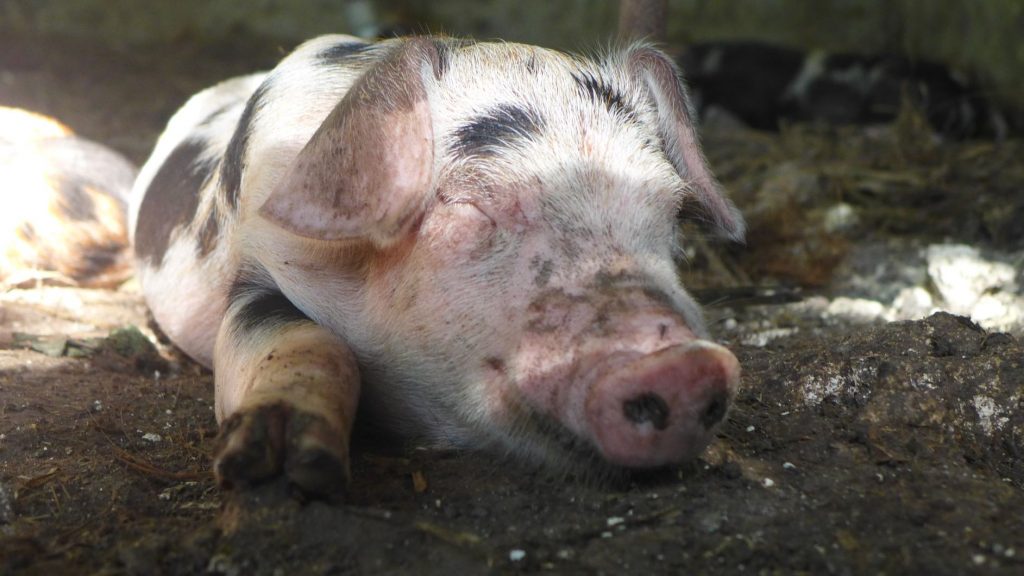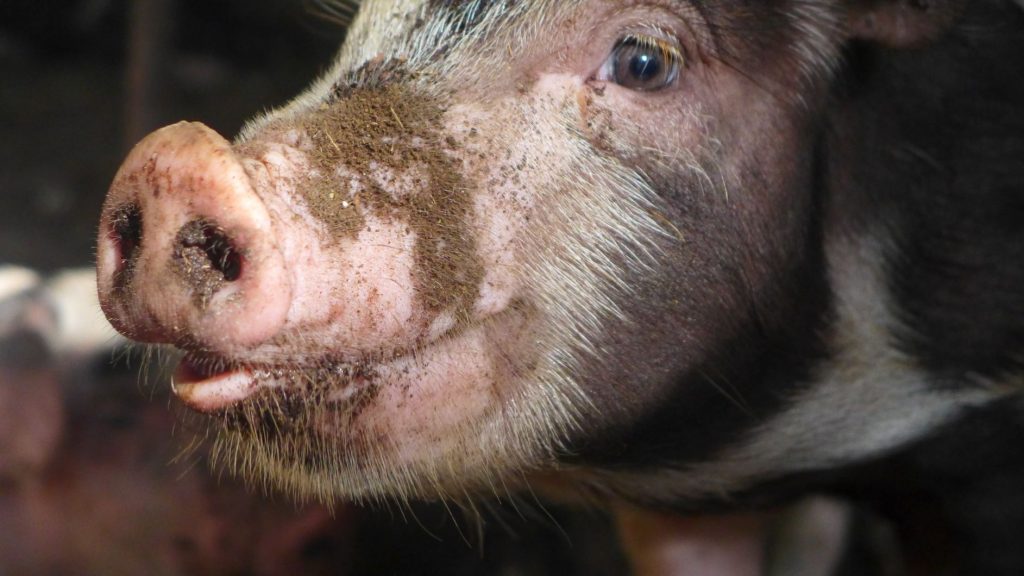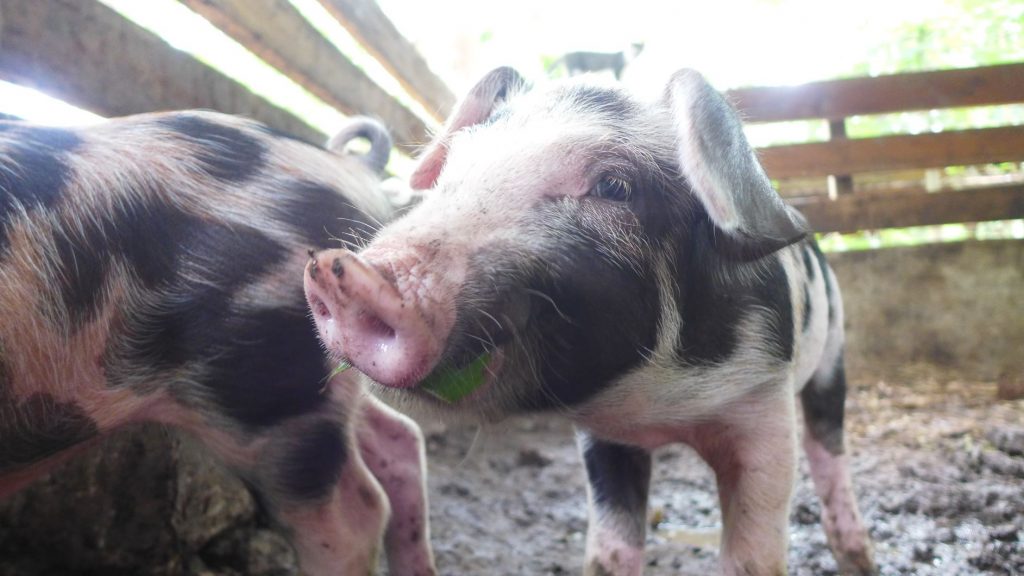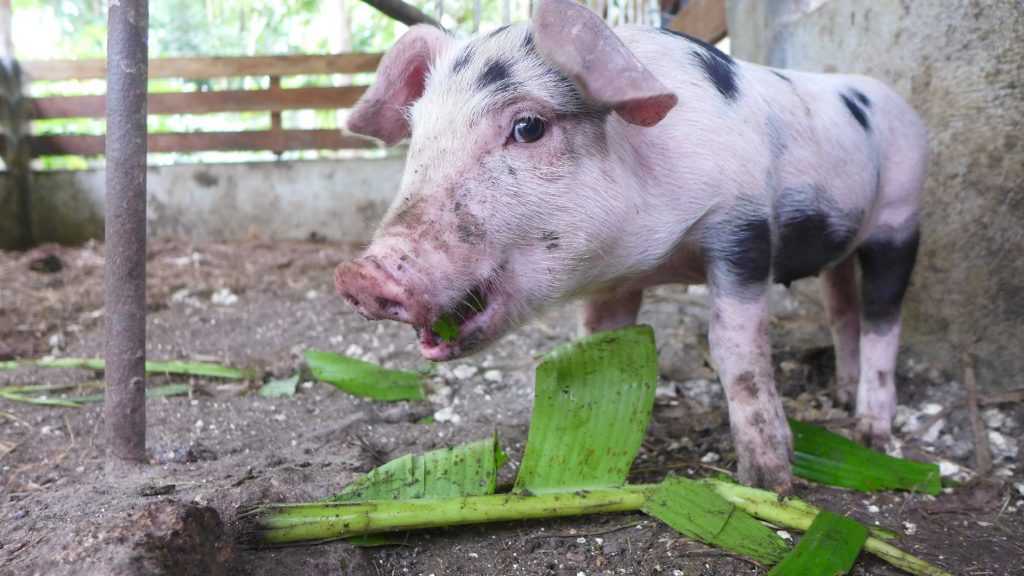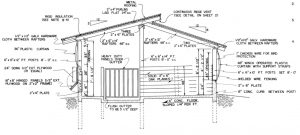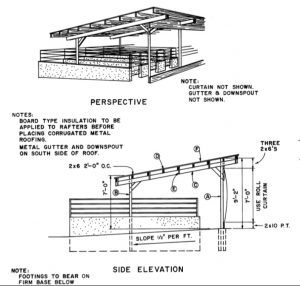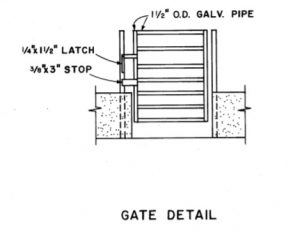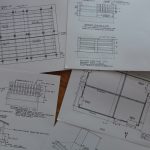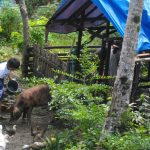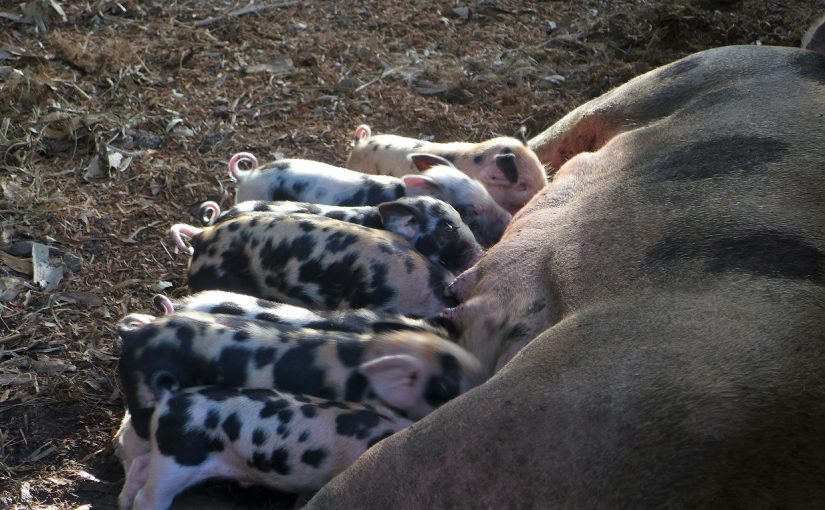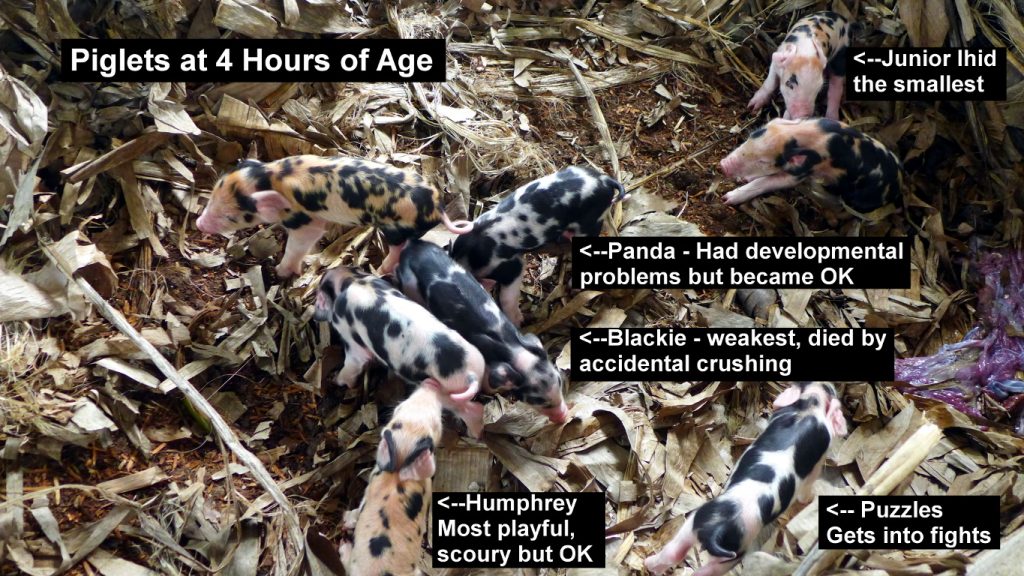Gestation 111 Days.
Serviced by Pinky Boar on November 10, 2018.
Farrowed March 1, 2019.
Electric Fan Installed in Maternity Pen
To reduce heat stress, we decided to install an electric fan in the maternity pen.
We transferred Auntie Brownie to the Maternity Pen at around 3 weeks before farrowing. I turned on the electric fan to test at 10:00AM while Auntie Brownie was busy drinking at the trough. She stopped drinking and looked up at the fan. All day, she avoided the fan and rested near the gate of the pen. However, by 5PM, she got used to the fan and slept right next to the creep space where the fan was directed. A tarpaulin was installed along the south side of the pen to provide shade from the heat of the winter sun.
By 107 days gestation, Auntie Brownie’s teats looked bigger. She also made louder grunting noises while resting, as if calling piglets to suckle. When she was feeling hot, she would point her nose to the fan, so I turn it on.
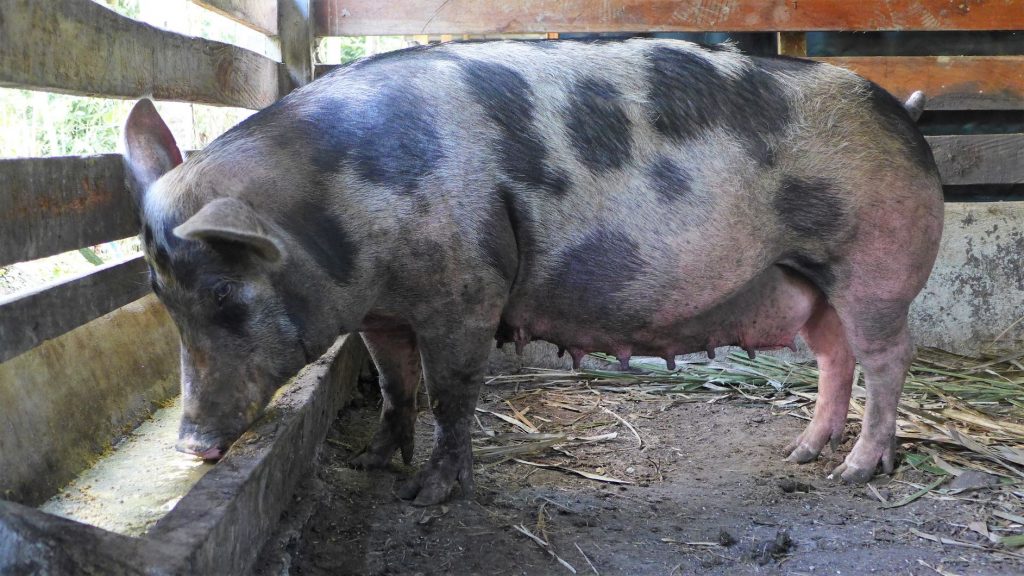
Sow’s Mothering Instincts
Two weeks before farrowing, Auntie Brownie’s mothering instincts became more and more apparent. She made grunting sounds prior to lying down, she was more alert and suspicious of sounds and movement in the environment, she shredded dry coconut leaves as if they were nesting material (our sows’ preferred nesting material are dry banana leaves), she pawed the ground prior to lying down, etc.
Twitching Leg of Sow
I noticed that while asleep or resting, Auntie Brownie’s rear leg twitched. This happened several times. I’ve associated this with uterine contraction and hope that it is not a sign of chronic reproductive illness.
Farrowing Day March 1, 2019 Friday
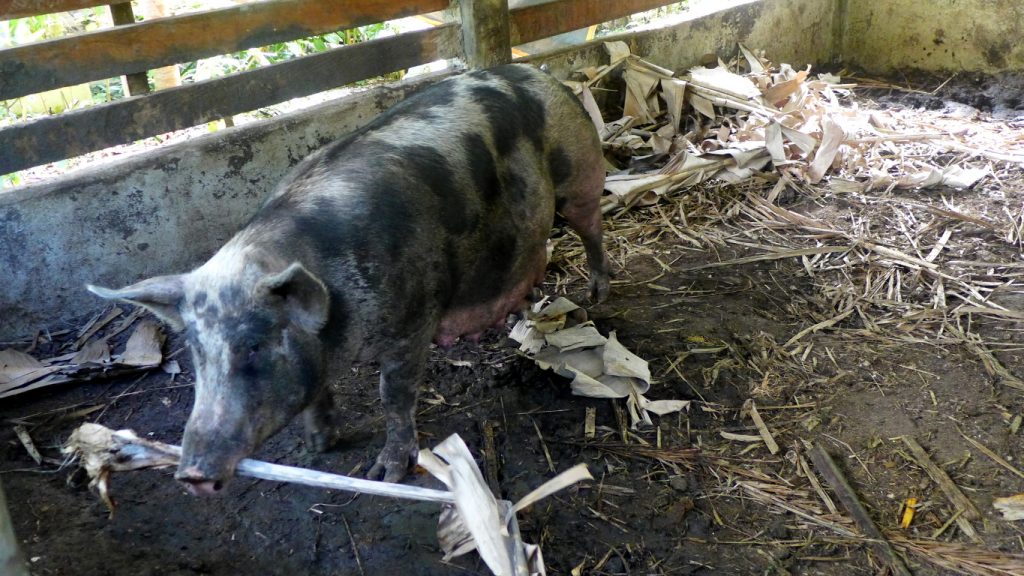
It rained in the early morning, so it was cool, a bit humid. Nest building started at 2:35PM. I’ve added Amovet (Amoxicillin Trihydrate) to Auntie Brownie’s drinking water to help ease the effects of MMA (infection). She ate some feed, some nesting material and 4 chicken eggs in the morning. She lay in the nest. She started farrowing some 6 hours later. I didn’t go near the pen, I just stayed in the house where I could look into the pen, some 20 or so feet away. We have a non-intervention policy during farrowing.
At 8:53PM Auntie Brownie adjusted her position on the nest a few times. She seemed to be in early labor. I could smell blood all of a sudden and knew that she has farrowed. Pinky Boar, housed some 25 feet away, responded with his typical ‘huh’ vocalisation. Pinky Boar always responds when farrowing begins.
At 9:13PM I could see movement in the nest. I could hear piglets fighting. Auntie Brownie chose to farrow along the lower south side of the pen, her teats facing the wall. Because of the fighting, Auntie Brownie got upset and rose, moved nesting material and I could see active piglets underneath her. She lay down and piglets squealed. Pinky Boar responded to the squealing.
March 2,2019 Saturday
9:00AM Observation: A very active litter of piglets. I am not yet sure how many piglets there are. Auntie Brownie nurses frequently, in 30 minute intervals, sometimes shorter. This is an advantage since she seems to have a large litter. I could see 10 live piglets and 2 dead ones. I had the fan on at 9:45AM. By 10AM, the piglets sleep away from the mother. There is fighting at the teats and the mother growls at times. When the mother gets upset, she lies on her teats to prevent the piglets from suckling.

At 5PM, 4 dead piglets collected from the pen. It was not clear whether they were stillborn or born alive and laid on by the mother. 12 live piglets observed.
March 3, 2019 Sunday
2:40AM I got woken up by the sound of a piglet crying. The black and white piglet had gone out through the escape hatch and couldn’t find its way back into the pen. I opened the pen gate and let the piglet in. This piglet remained the most adventurous in the litter.
6:30AM A dead piglet found in the nest, apparently laid over by the mother.
2:00PM A small piglet got caught between the mother’s legs after nursing. It was a very weak piglet that had difficulty finding its teat. It was fighting through its sibling at the back teats. The mother seemed aware that she was crushing a piglet between her legs and did not move. The mother had to be encouraged to move so the piglet could be rescued. We decided to hand-rear the piglet because leaving it with the sow and litter-mates will almost certainly kill it.
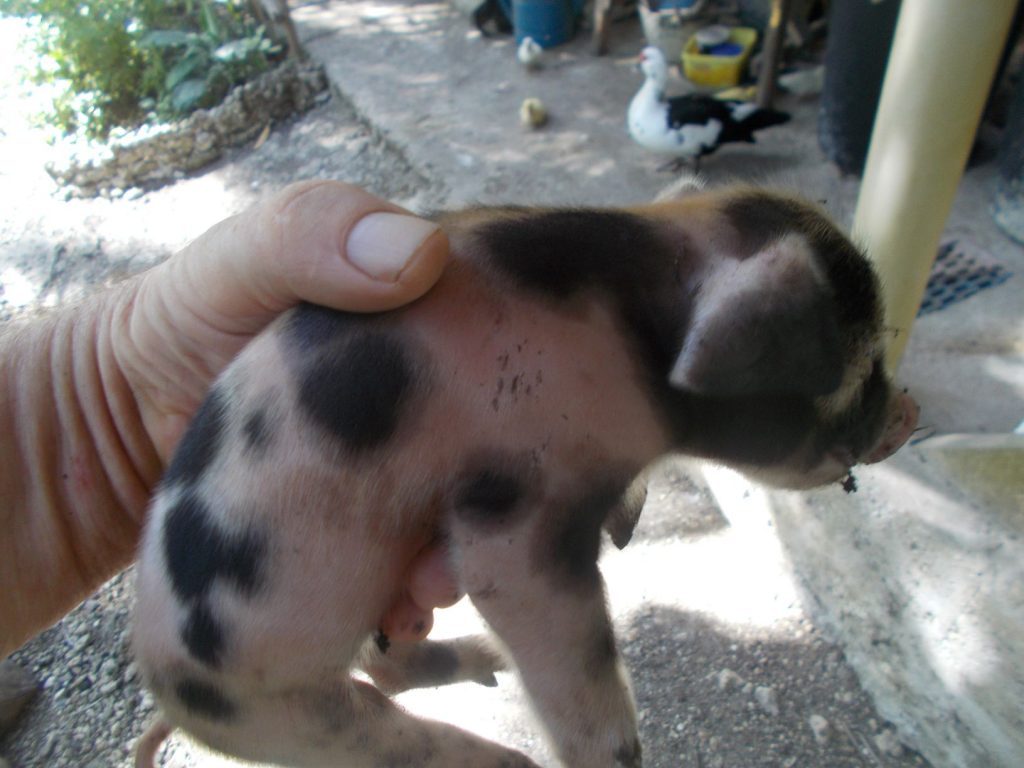
Another small and weak piglet was observed. We decided to let it stay with the mother for the next 12 hours and see if its performance improves. Otherwise, we will hand-rear it.
Teeth Clipping
Several times, Auntie Brownie got hurt nursing. She growled and got up. So we decided to cut piglets’ teeth.
Teeth-clipping quickly done at 3PM. At the same time, iron drops were given to all the piglets. Teeth clipping made nursing events much more peaceful.
I am disappointed that we still haven’t solved the problem of the sow getting hurt by piglets’ needle teeth during nursing, a problem we didn’t need to deal with in our first parity. I thought that managing MMA early and providing a fan to reduce heat stress would solve this problem. But it hasn’t.
March 4, 2019 Monday
6:25AM Found a dead piglet, a large black and white male. This wasn’t the weak piglet observed yesterday. It seems that crushing is quite random, until the optimal number of piglets are left. In our sows’ case and history, we learn that this is 8 piglets. There are 9 piglets left with the sow, so we will definitely need to remove a piglet from the litter and hand-rear it (we already have one piglet in our care and she is doing well). In retrospect, we should’ve done this yesterday, which might have arrested today’s crushing incident.

4:00PM During feeding, while Auntie Brownie is busy eating, I took away the weakest and smallest piglet in the litter, leaving 8 piglets for the sow. There are 2 piglets in foster care now, which is better since they motivate better feeding through competition and they keep each other warm during the cold evenings.
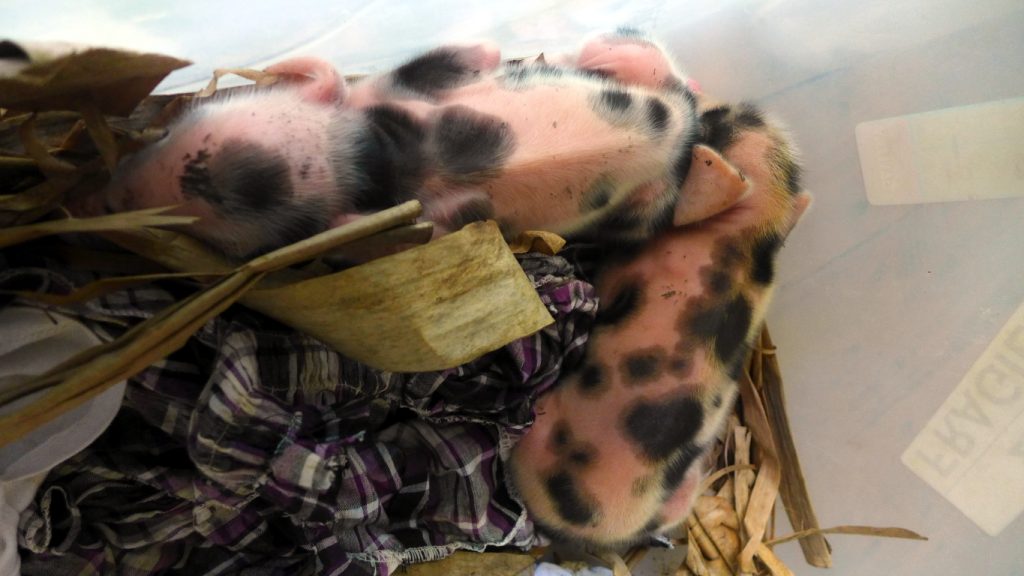
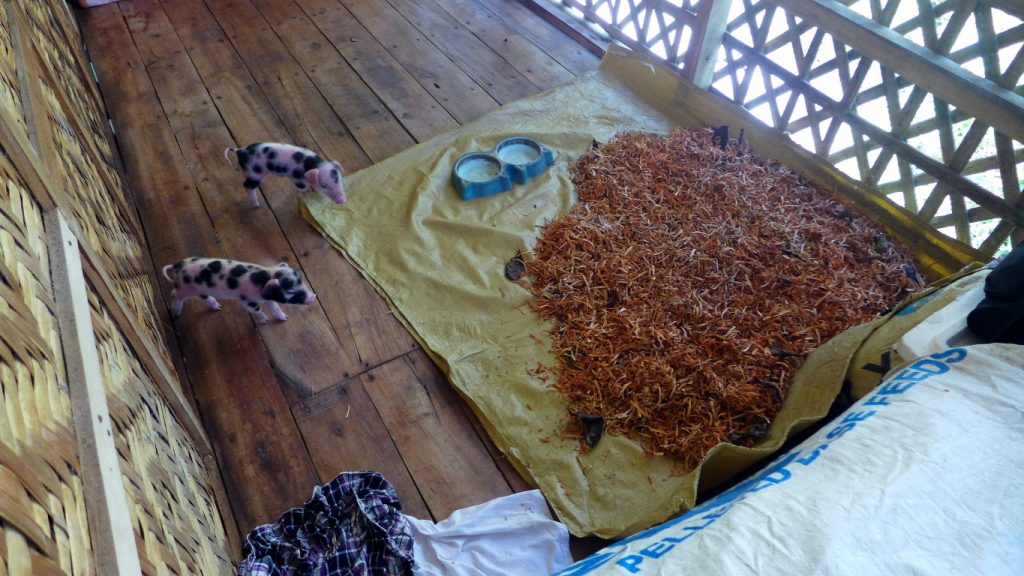
Now 3 days old, the piglets have discovered the escape hatch and have been exploring the soil and vegetation in ‘The Restaurant.’ Piglets fight over teats much less now and nursing events are peaceful and successful. Temperature ranges are very comfortable for the piglets, boar and sow, but not so for lactating sows. The electric fan helps in this regard.
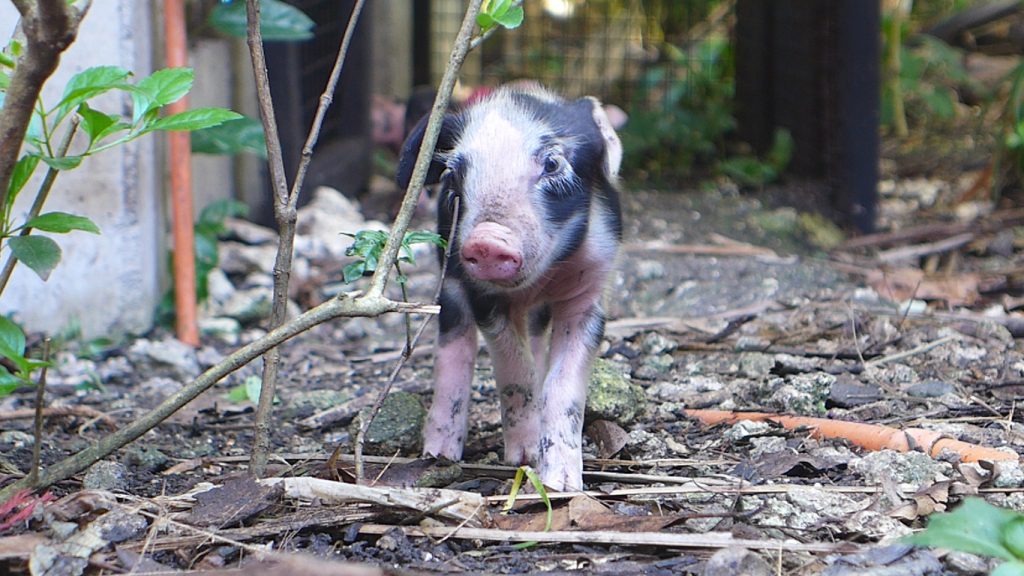
March 7-9, 2019 Thursday-Saturday
This is Day 6-9 from farrowing and Auntie Brownie is lethargic and irritable perhaps because effect of antibiotic has worn off (she was given Amovet for 4 days). Amovet recommends 3-5 days for pigs.
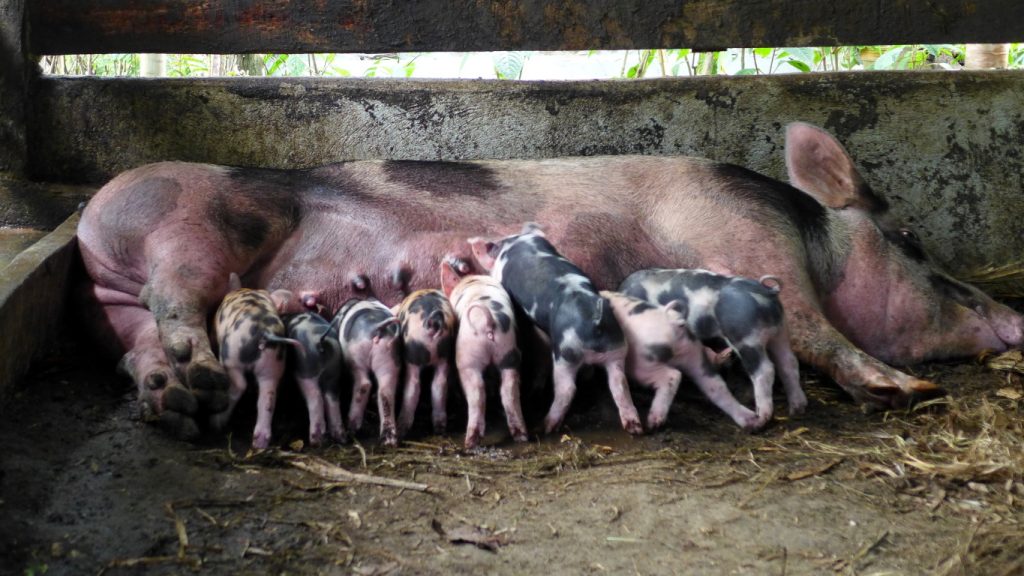
March 16, 2019 Sunday
A (Non-Fatal) Crushing Incident
Hot and somewhat humid day because of rain at 1PM. After afternoon feeding, I gave banana leaves to Auntie Brownie and she started eating it with her piglets. I walked off to give water to Pinky Boar and Sow Number 3 when I suddenly heard Auntie Brownie grunting (nursing). I thought this was too soon when she was just eating banana leaves with her piglets. So I had a look, piglets were nursing. I counted only 7 piglets so I looked where the 8th was and found it. Its head and front legs were buried under Auntie Brownie’s backside. I managed to get Auntie Brownie to get up but the piglet wasn’t breathing. I hit the piglet a few times with a broom (made of the fine midrib of dry coconut leaves) and after a couple of seconds, it woke up and jumped. It walked away dazed, frightened. After an hour or so, it looked better and joined the litter fighting over teats.
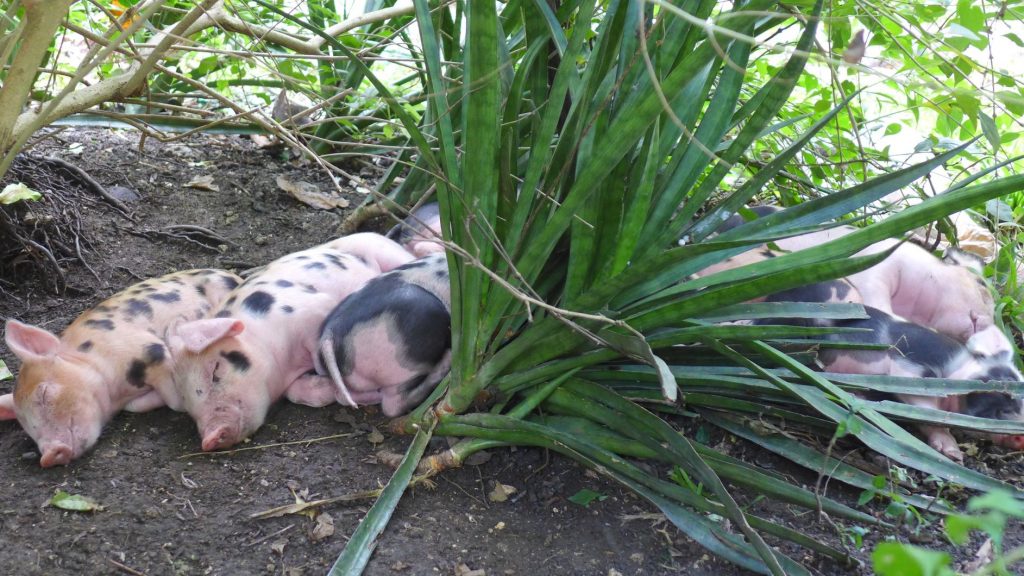
This crushing event was very disheartening. This was a 15-day old piglet, a rather large piglet, which could’ve been killed. I suspect these types of incidents have taken place before, but the sow got up after several minutes (for example, after nursing which takes 2-4 minutes). The chances of a piglet being able to breath again after being crushed (suffocated) for several minutes is quite high. But a weaker piglet could’ve been killed. I must’ve noticed this pattern before because I always look whenever I hear the sow nursing.
March 28, 2019 Tuesday
Day 27. Auntie Brownie still has this intermittent trembling/twitching leg syndrome while sleeping or lying on her side. I wonder if this is a sign of reproductive disorder or other? She has no other obvious symptoms.
Weaning

April 7, 2019 Sunday – Piglets are 36 days old. We separated Auntie Brownie from the piglets. Auntie Brownie growls a bit and paces back and forth her pen whenever the piglets call for milk. By April 9, she no longer does this; she rests better and rests quietly. Her only distress is the build-up of milk in her teats, thus we feed sows much less when weaning so there is lesser milk production.
April 11, 2019 Thursday
Auntie Brownie is back in heat. We don’t mate our sows immediately after weaning. We usually wait till 2-3 more cycles, when the sow is in better body condition.
Update on the Hand-Reared Piglets
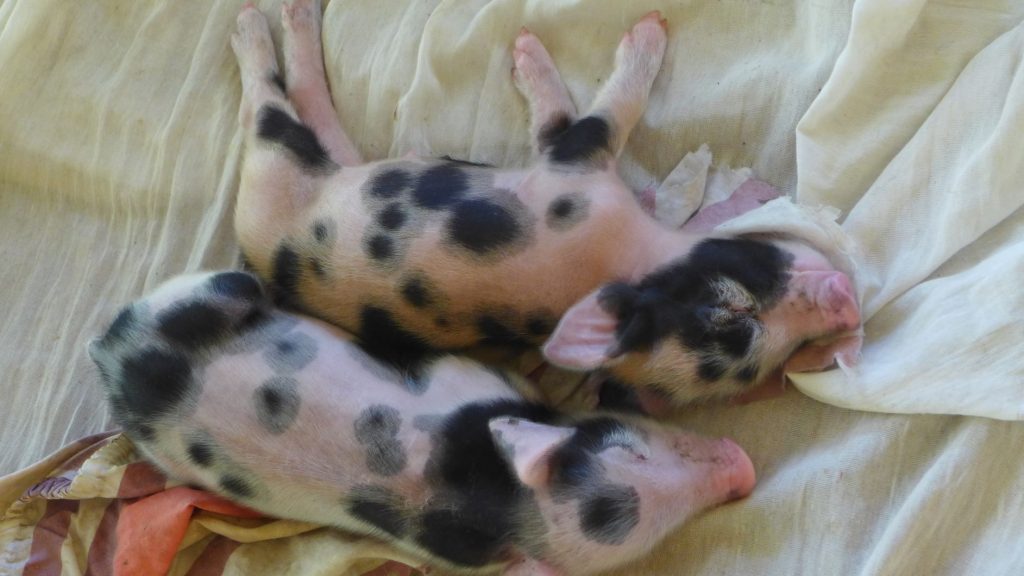
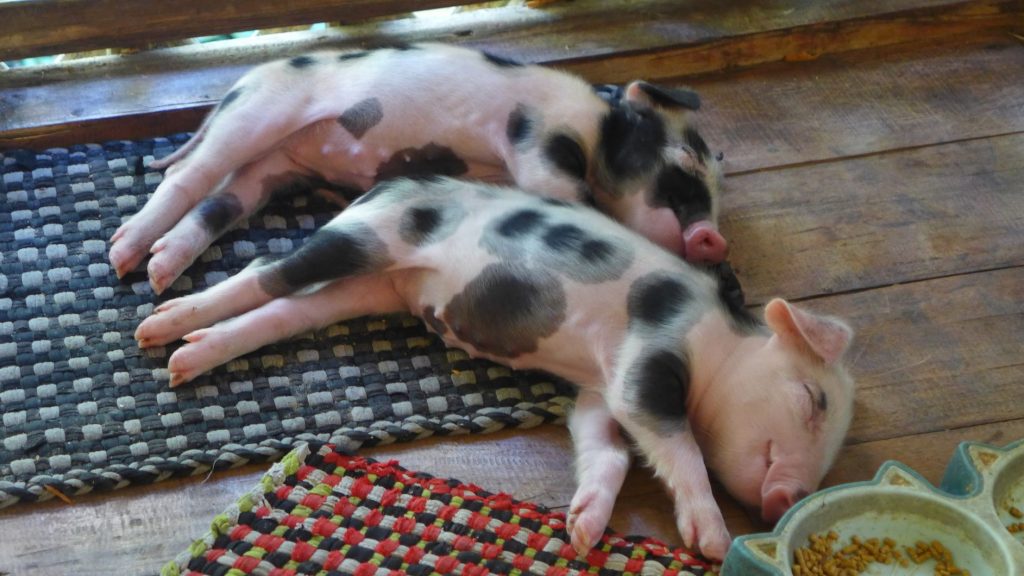
The two female piglets were 2 and 3 days old when collected for hand-rearing. The first piglet had milk scour at 7 days of age for about 4 days. Perhaps because of the cold evenings (23-24 degrees C). I provide hot water bottles for them to lie on at night.
Piglets are given foster milk every 2-3 hours. For the first 4 days, a small prescribed amount of Amovet was added to their milk. Once a day, the milk is mixed with egg and a small amount of citric acid to acidify the stomach and discourage bacteria colonisation.
I started adding piglet feed to the milk at 6-7 days of age. I dissolve the pellets in the milk and the piglets readily consume that. By 2-3 weeks of age, piglets are fed every 4 hours. They eat solid food by 2 weeks They are also given fresh leaves to eat, ripe bananas and papaya When their siblings are weaned, the hand-reared piglets are placed in the pen to root in the soil. The 2 hand-reared piglets are smaller than their litter-mates but they are active and eating well. I’m very happy that we’re successful in hand-rearing piglets this time, unlike our depressing failure in May 2015, mainly due to lack of experience and reliance on unsuitable information from others.
Below are videos of the two piglets we hand-reared.
